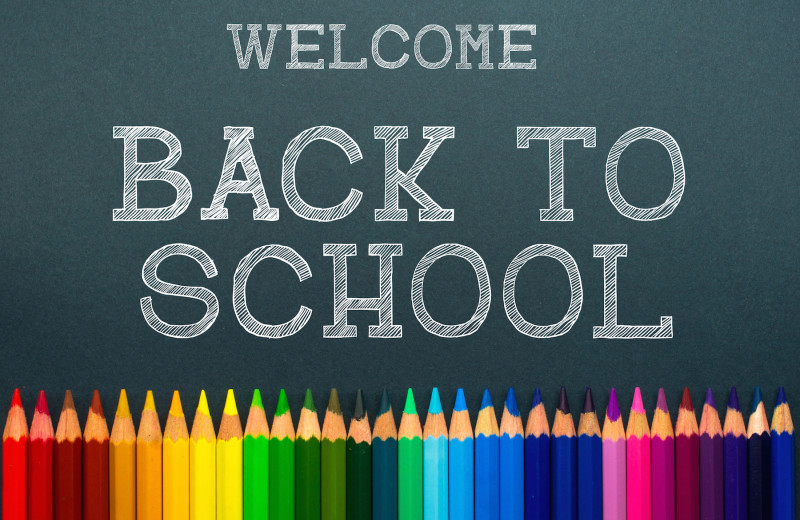First impressions matter — especially on the first day of school. Students arrive with a mix of emotions. Most, however, are nervous. The reasons vary from child to child, but kids tend to feel anxious about starting school. This is not necessarily a bad thing; some anxiety is normal, even healthy. However, teachers can do a lot to ensure their classrooms are safe and welcoming on the first day of school.
Assign seats before school starts.
This is a strategy I learned the hard way. Thinking I was being progressive, I invited students to “sit wherever you want” on the first day of classes. To my horror, more than one student was caught in the embarrassing situation of getting shunned or shooed away from a seat supposedly being saved for a friend. My carelessness had resulted in some students feeling like unwelcomed outsiders. Assigning seats before the year starts is easy at any grade level. Simply number the seats. On the first day, hand each student a number as he or she enters the room. You now have a seating chart. If you quickly realize that Tanner and Isabella should not be seated near each other, you can make adjustments.
Use students’ names from day one.
As quickly as possible, start calling students by their names. Students can quickly make paper name tents using 5 X 7 note cards and prop them on their desks. Have them write their first name using a bold marker or Sharpie. This allows you to refer to them by name from the very start. Using a student’s name creates a sense of familiarity. When you know someone, you call them by name.
Bonus tip: Getting Your Students' Names Right!
Don’t just introduce yourself. Share your story.
Why did you go into teaching? After years in the profession, it can be easy to forget what brought us to teaching. Sharing our stories with kids not only helps them get to know us, it also reminds us of our chosen path. No matter how old the story seems to you, it is brand new to your new class of students.
Give them something to commemorate the first day.
Last year, I ordered large stack of play money. On the first day of school, I gave every student a toy $5.00 bill and let them know I was investing in them. I said if they still had the fake $5.00 on the last day of school, they could redeem it for treasures from a prize box. Not only did this encourage them to be responsible with what they are given, but it provided a fun, quirky story for them to tell at home. Nine months later, 90 percent of my seventh graders still had that $5.00 when school ended. I circulated the room with a big box of goodies and students were able to cash in their $5.00 for several treats from the box. I also asked how they managed to keep from losing such a small piece of paper. They excitedly shared strategies like “I put it inside the plastic cover of my binder” and “I hid it in my phone case.” (Hint: I wound up giving a treat to those who no longer had their $5.00, too.) This little ceremony made for a last day of school filled with smiles.
Give students the tools they need.
Along with giving students a trinket or symbolic keepsake, I recommend freely giving out pencils throughout the year. I start the year with about 400 Ticonderoga pencils and keep 20 in a jar with a label that reads: Need one? Take one. This eliminates the anxiety often associated with forgetting something to write with. My students never worry that negative attention will be drawn to their errors.
Even the child who chronically forgets or loses his or her pencil is welcome to take one from me as often as needed. This doesn’t mean I won’t strategize with individual students on how they might be better stewards of their supplies; however, in class, I am committed to eliminating any form of public humiliation or frustration associated with kids forgetting or losing supplies. Even if a student is irresponsible with a pencil (e.g., breaks it or carelessly leaves it on the floor), I will quietly ask to chat with him or her after class. We then brainstorm solutions.
Emphasize what students can do, not what they can’t.
When it comes to creating class rules, using the positive voice is helpful. For example, it might be commonplace to have a sign in your room stating, “No gum chewing.” Instead, why not replace the sign with one that says, “Breath mints permitted”? Or instead of “No soda” why not try, “Water bottles allowed”?
Promise to give your best.
It is common practice for us to ask students to give their best, be their best, demonstrate self respect, and value learning. In a warm, welcoming classroom, however, teachers can also promise to give students their best. This can be as simple as, “I will work hard for you. I will push you to learn. I will require your best, and I will give you my best.”
Send home a packet of important forms.
Good teachers send home a welcome packet. Often, this includes a letter, syllabus, schedule of upcoming events, and a school supply list. Try adding something unique to your welcome packet this year. It can’t hurt to approach local businesses for “buy one get one free” coupons, complimentary movie tickets, or other deals, especially when they know you will be giving them to families in the community. Your local public library might also have some goodies for you to include in the packet. I also send home a blank copy of my weekly “outside reading log” so parents know what I am referring to when I talk about reading logs.
Contact families before you go home for the day.
Using your online learning management system (grade book, attendance, email, etc.) should allow you to email each of your classes with a personalized note about the first day of school. If you take notes during the day, you can share specific positive observations in your message. Parents will appreciate this and interpret it as a sign that you are a conscientious teacher. In addition, you can include requests like “Ask your child about his $5.00 bill” or comments like “This class has a great sense of humor!” You can also ask parents to look through the welcome packet, sign any necessary forms, and remind their kids to bring required forms back. Reaching out at the end of the first day sets a precedent that emphasizes the value you place on communication. Parents will quickly see that their kids are in the hands of a teacher who isn’t merely going through the motions, but who cares enough to share his or her enthusiasm with families.
Can you think of other strategies for ensuring a welcoming first day of school? Do you have ideas that you have used successfully over the years? Tell us about them n the comments field below.
Chad Donohue is a middle school teacher, blogger, and adjunct professor living in Snohomish, Washington. Chad writes passionately about issues pertaining to educators, students, and families. He has been teaching since 1993.



